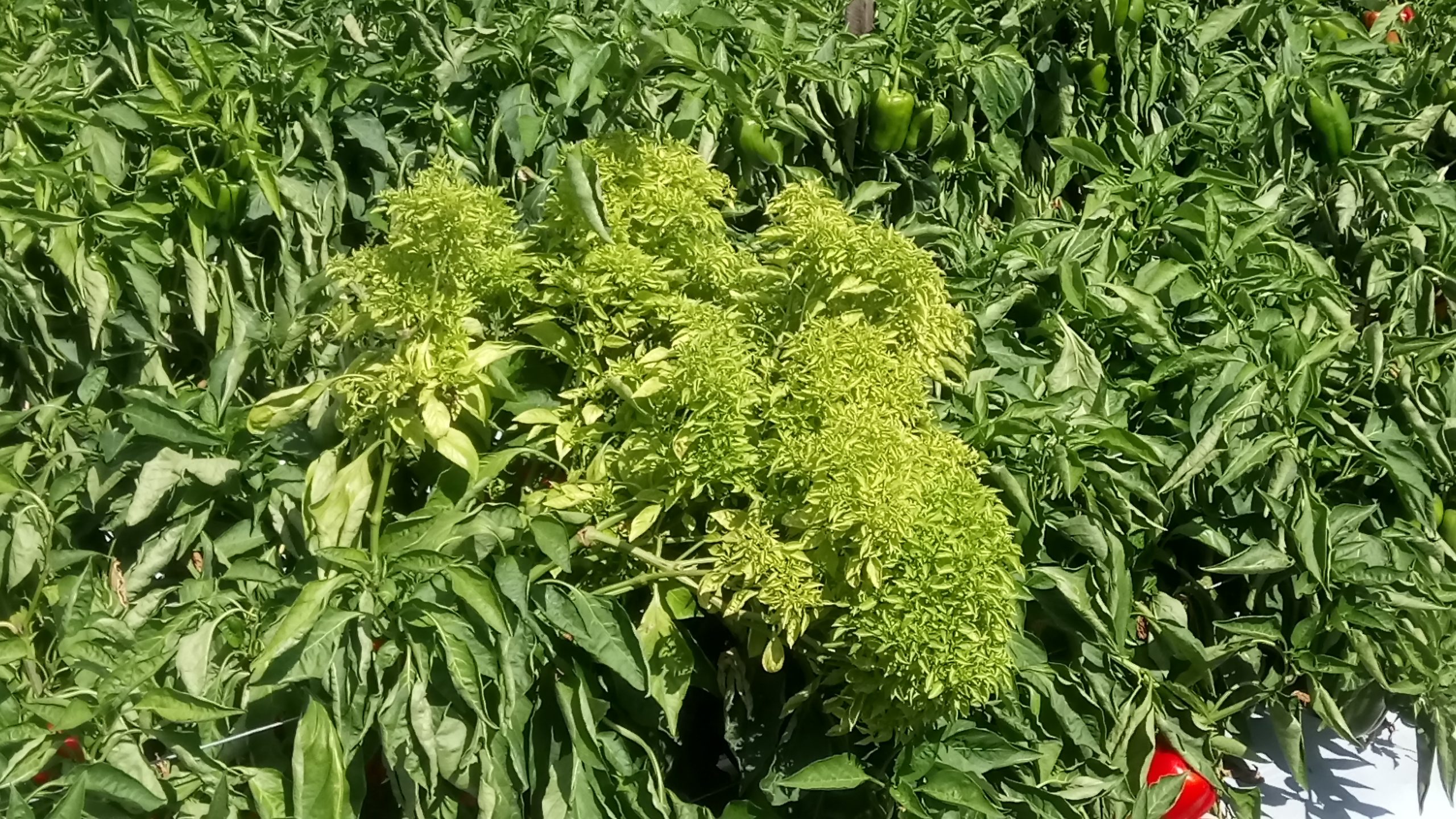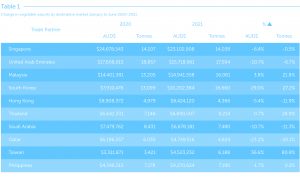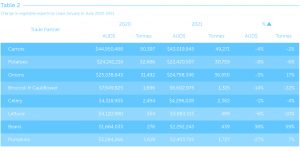
Tomato potato-psyllid in Australia: Yesterday, today and tomorrow
14 September 2021
Vector monitoring and disease identification activities continue
14 September 2021Vegetable exporters have continued to supply international markets during for the first six months of 2021 despite experiencing market and logistical disruptions. Total vegetable export value has dropped 3.5 per cent to AUD$126 million and volumes are up two per cent to 127,783 tonnes compared to the same period of 2020. AUSVEG’s Sam Turner reports.
Exports from January to June 2021
Total vegetable exports declined slightly in the first six months of 2021 compared to the same period in 2020. Based on data from the Global Trade Atlas, there was a slight decrease of 3.5 per cent in fresh vegetable export value, from $131 million to $126 million. Despite the decrease in export value, total vegetable export volume has increased slightly by 1.7 per cent, with an additional 2,101 tonnes shipped taking total export volume to 127,782 tonnes over the same period.
Australian vegetable exports started strongly in January 2021 as compared to the same period last year. March 2021 was the largest month for vegetable exports with export value of $24.1 million and export volume of 25,740 tonnes (refer to Figure 1).
Exports by destination and crops
The main export destinations for Australian fresh vegetable are ASEAN and the Middle Eastern regions. Singapore has recorded a slight decline in export value by 6.4 per cent from $24.7 million to $26.1 million and export volume remained consistent. The United Arab Emirates (UAE) experienced a dip of 10.7 per cent in value and a decline of 6.7 per cent in volume.
Malaysia rose 3.8 per cent in value and 21.8 per cent in volume. Thailand saw a modest uptick in trade volume by an average of 28 per cent and Taiwan experienced the largest increase in trade of the top export markets, with an increase in volume exported of 81 per cent (refer to Table 1).
The first half of 2021 continued to see root vegetables such as carrots, potatoes and onions shipping significant export volumes. Onion export volume recorded a 17 per cent increase of 5,458 tonnes compared to the same period in 2020. Beans have recorded a significant increase in export volume of 59 per cent and value increased by 38 per cent (refer to Table 2).
Outlook
While demand for Australian vegetables continues in a range of export markets, COVID-19 disruptions continue to impact vegetable exporters. Growers continue to face challenges with increases in freight costs, reduced freight capacity, inconsistent sailing schedules and difficulties in securing containers.
In addition to these challenges, growers are also facing rising input costs. Over the last few months, cardboard and packaging prices are increasing, along with other imported farm inputs. These expenses are on top of the labour shortages due to international travel restrictions and the increased regulatory charging regime for export certification that commenced on 1 July 2021.
What’s next?
A strategic levy investment under the Hort Innovation Vegetable Fund, the Vegetable Industry Export Program (VG16061) concluded on 30 June 2021.
AUSVEG wishes to acknowledge all exporting vegetable producers, Austrade, the Department of Agriculture, Water and the Environment and various other project partners that contributed to the successful delivery of VG16061.
Development of the next iteration of the vegetable industry export program is currently underway. In the meantime, AUSVEG strongly encourages all exporting growers to continue to engage with the AUSVEG Export Development team to discuss any international trade-related matters.
Find out more
Growers interested in identifying export events, or who would like to discuss export opportunities, can contact the AUSVEG Export Development team on 03 9882 0277 or email export@ausveg.com.au.




